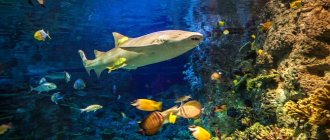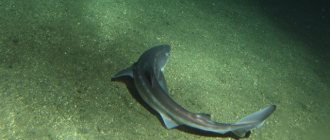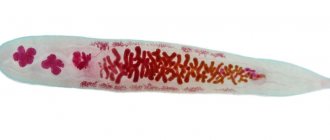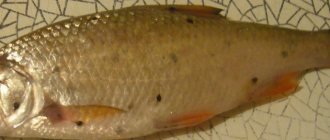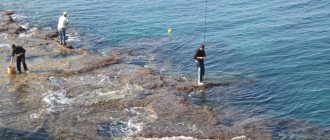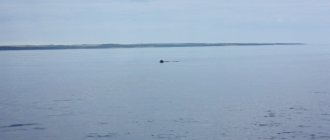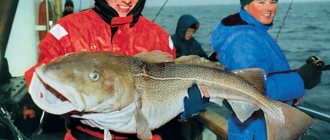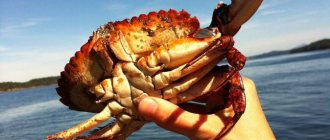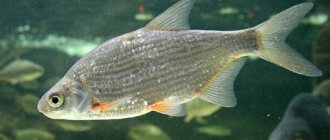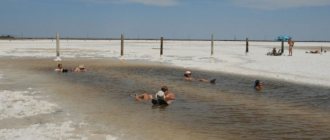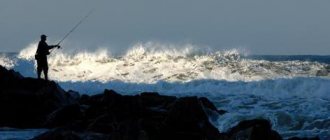Description of the katran
Katran, or dogfish, is one of the most common species of sharks on our planet today. This aquatic inhabitant is also known as:
- common katran;
- common spiny shark;
- spiny spotted shark;
- spiny shortfin shark;
- blunt-nosed spiny shark;
- sand katran;
- southern katran;
- nail polish
The dogfish is of particular interest for sport and commercial fishing, due to the absence of the specific ammonia odor characteristic of many other shark species.
Appearance
Along with most other sharks, shortfin spiny sharks have a streamlined body shape, which is considered one of the most perfect for large fish. The body of the katran reaches a length of 150-160 cm, but for most individuals the maximum dimensions do not exceed one meter. It should be noted that female dogfish are slightly larger than males . Thanks to the cartilaginous skeleton, the weight of the shark is significantly reduced, regardless of the age characteristics of the sea predator.
Katrans have a long and slender body, allowing them to cut through water with great ease and quite quickly and move with sufficient speed. Thanks to the multi-bladed tail, it functions as a rudder and significantly facilitates the movement of predatory fish in the water. The skin of the katran is covered with small placoid scales. The sides and back area most often have a dark gray background color, which sometimes has small white spots.
The snout of a spiny shortfin shark with a noticeable point. The standard distance from the very tip of the snout to the mouth area is almost 1.3 times the width of the oral cavity. The eyes are located at approximately the same distance from the first gill slit and the tip of the snout. The nostrils are shifted towards the very tip of the snout. The teeth of the spiny shark are identical on both jaws, sharp and single-pointed, arranged in several rows. Such a sharp and very dangerous weapon allows the predator to cut and tear food into fairly small pieces.
There are quite sharp spines near the very base of the dorsal fins. The first such spine is noticeably shorter than the dorsal fin, but comparable to its base. The second spine is characterized by increased length, so its height is equal to the dorsal second fin, which is smaller than the first fin.
This is interesting! In the area of the head of the common blenny, approximately above the eyes, there are filiform-branched and rather short outgrowths or so-called lobes.
The sea dog does not have an anal fin. The pectoral fins are quite large in size, with a slightly concave caudal edge. The pelvic fins have a base located closer to the second dorsal fin.
Lifestyle, behavior
A special role in the shark’s orientation in the vast expanses of the sea is assigned to an important organ - the lateral line . It is thanks to this unique organ that large predatory fish are able to sense any, even the slightest, vibration of the water surface. The shark's very well-developed sense of smell is due to the fossae - special nasal openings that go directly into the throat area of the fish.
At a considerable distance, the blunt-nosed spiny shark can easily capture a special substance secreted by a frightened victim. The appearance of the sea predator indicates incredible mobility, the ability to quickly develop a decent speed and pursue its prey to the end. Katrans never attack humans, so this aquatic inhabitant does not pose a danger to people at all.
How long does Katran live?
As numerous observations show, the average lifespan of the common spiny shark is quite long, most often reaching a quarter of a century.
Sexual dimorphism
Signs of sexual dimorphism in adult and young sea dogs are not very well expressed and are represented by differences in size. The length of adult male katrans, as a rule, is slightly less than a meter, and the body size of female katrans most often slightly exceeds 100 cm. It is easy to distinguish a spiny shark or a katran by the complete absence of an anal fin, which is a specific feature of males and females of this species.
Return to content
What types of sharks live in the sea in Crimea
It is known that Black Sea katrans are quite common on the territory of the Republic of Crimea. It is noted that these types of sharks are quite numerous, and they feed mainly on fish. The size of this type of marine life reaches 1.5 meters, and, as experts note, these types of sharks are not capable of causing any harm to humans. Black Sea Katrans are harmless to humans, even though they live in flocks.
It is noted that, despite the fact that the Black Sea katrans are not capable of eating a person, they should still beware. The fact is that there are multiple spines on the surface of their skin. They are considered poisonous and can leave wounds on human skin if they come in contact with them.
Residents and guests of the Republic of Crimea should know that Black Sea katrans do not attack people and do not swim close to the beaches. It is also noted that no sharks anymore live in the waters of the Black Sea, but katrans live there permanently. Guests of Crimea can be cat sharks that get there through the waters of the Mediterranean Sea. However, for them, people are not considered prey, but, on the contrary, are perceived by them as a threat.
Range, habitats
The distribution area of the katran is very wide, so there are a large number of places in the world's oceans where it is possible to see such aquatic predators. From the territory of Greenland to Argentina, from the coast of Iceland to the Canary Islands, in the Indian and Pacific oceans, near the coasts of Japan and Australia, such relatively small sharks are found.
However, katrans prefer to avoid excessively cold and too warm waters, so it is simply impossible to meet this aquatic inhabitant in the Arctic or Antarctica, as well as in tropical seas. Cases of fairly long-distance migration of representatives of the common spiny shark have been repeatedly recorded.
This is interesting! On the surface of the water, it becomes possible to see a dogfish or katran only at night or during the off-season, when the water temperature is close to 15°C.
On the territory of Russia, spiny sharks feel great in the waters of the Black, Okhotsk and Bering seas. As a rule, such fish prefer not to move too far from the coastline, but in the process of searching for food, the katrans get too carried away, so they are able to swim away into the open sea. Representatives of the species prefer to stay in the bottom sea layers, and sometimes descend to considerable depths, where they gather in small flocks.
Return to content
What does a Katran shark look like?
This is a relatively small cartilaginous fish with an elongated and streamlined muscular body. This is not the smallest shark in the world. Males are smaller than females and grow up to 1 meter. The length of females reaches 1.5 m. The weight of the largest fish can reach up to 15 kg. Males and females are colored the same, brownish-gray or bluish-gray. The ridge and back are dark, the belly is grayish-white or white. There are a few small white small spots on the sides. For this reason, the katran is also called the spotted shark.
Great speed is achieved by strong movements of the long muscular tail and large fins. A light, flexible cartilaginous skeleton and a liver full of fat are responsible for the excellent buoyancy of the fish. The Katran's eyes are large and quite sharp. Like most sharks, it has an excellent sense of smell and is able to smell a tasty smell that interests it from several kilometers away. The structure of the teeth is the same as that of other related marine predators. Several rows of identical sharp teeth growing on both jaws are constantly replaced. During the life of a katran, more than 1000 pieces can be exchanged.
Interesting! If you read, look and compare the descriptions of large sharks (blue, white) and the katran, it becomes clear why filmmakers so often film the sea dog as a smaller copy of the terrifying killer sharks. It looks very similar, but is much less dangerous.
The skin of the katran is covered with placoid (plate-like) scales; each scale has a kind of hook-tooth that makes the skin rough, like sandpaper. The composition and structure of these spines are similar to the structure of shark teeth. In the old days, catran skins were even used for processing wood as sandpaper. The two dorsal fins are equipped with relatively large, sharp spines, for which the fish got its name - the spiny shark. The anal fin is absent. Long pectoral and ventral fins without spines.
Interesting! The name “katran” goes back to the ancient Greek “kedroni”, derived from the word “kedron”, which meant a hard, sharp cone or thorn. The name of the coniferous tree cedar comes from the same word.
Katran diet
The basis of the diet of katrans is represented by a wide variety of fish, including cod, sardines and herring, as well as all kinds of crustaceans in the form of crabs and shrimp. Very often, the prey of the common spiny shark are cephalopods, which include squids and octopuses, as well as worms and some other animals that lead a bottom lifestyle.
Sometimes an adult shark may well feast on jellyfish, and also does not disdain seaweed . Following the movement of various forage fish, spiny sharks in some habitats are capable of undertaking migrations of significant duration. For example, off the Atlantic coast of America, as well as in the eastern waters of the Sea of Japan, sea dogs travel considerable distances.
This is interesting! In waters where there are too many spiny sharks, such marine predators cause significant damage to fisheries, since large katrans are capable of eating fish on hooks and in nets, chewing tackle and tearing nets.
In the cold season, juveniles and adult Katrans try to stay together, descending 100-200 meters from the surface. At this depth, a temperature regime that is comfortable for living and hunting is maintained, and there is also a sufficient amount of horse mackerel and anchovy. In too hot summer periods, katrans are able to actively hunt whiting in a flock.
Return to content
Hunting and spawning of spiny shark
Sea dogs most often hunt in small groups for small and medium-sized sea fish that lead a schooling lifestyle. Their main prey is herring, sprat, anchovy, horse mackerel, sardine, cod, etc.
At the same time, katrans diversify their menu with mollusks and crustaceans, eating squid, octopus, and amphipods.
Sometimes spiny sharks can follow large schools of herring or cod and make quite significant migrations. The Katran was once caught in Japanese waters several years after it was tagged off the opposite side of the Pacific Ocean off the coast of California.
Watch the video - Katran attacks the bait:
The katran has the longest gestation period among all sharks. Spiny sharks are ovoviviparous fish. Inside the womb of a female katran, a kind of “gestation” of future sharks occurs for 18-22 months.
The eggs, about 4 cm in diameter, are stored in special capsules made of a gelatin-like substance.
After 1.5-2 years, baby sharks measuring 20-27 cm leave the mother’s body.
To spawn, Katrans go to relatively shallow waters in the fall (to a depth of 25-40 meters). Here, newborn sharks feed on small crustaceans (shrimp) and juveniles of other fish species.
After 13-17 years, the katrans reach a size of about a meter in length and become sexually mature.
Watch video - Katran shark embryos:
The average lifespan of a sea dog reaches approximately 25 years. By the way, the same poisonous spine, which is the main danger for the fisherman, helps determine the age of a caught spiny shark.
It turns out that on the cut of the thorn there are some kind of annual rings, similar to those found on tree trunks.
Katrans often cause some damage to fisheries, destroying commercial fish and damaging nets. Sea dogs live up to their nickname by gnawing gear, eating fish caught on the hooks of longlines or nets, and sometimes tearing nets.
In Canada in the 50s of the last century, government rewards were even announced for the destruction of spiny sharks.
Watch the video - Diving with a spiny shark in Norway:
Reproduction and offspring
One of the characteristic features of the reproduction of any sharks, which distinguishes them from various bony fishes, is the ability of internal fertilization. All Katrans belong to the category of ovoviviparous species. Mating games of sharks take place at a depth of 40 meters. The body of females contains developing eggs, which are located inside special capsules. Each such internal natural gelatinous capsule can contain about 3-15 eggs, the average diameter of which is 40 mm.
Females carry their offspring for a very long time. This pregnancy, the longest among all existing sharks, can last from 18 to 22 months. The place for the birth of juveniles is chosen near the coastline. The offspring of one female common spiny shark can consist of 6-29 fry. Newborn sharks have peculiar cartilaginous covers on their spines, so they do not harm their mother. Such covers are shed immediately after birth.
Newborn dogfish sharks have a body length of 20-26 cm. When the first eggs are already preparing for birth, a new portion of eggs is already maturing in the ovaries of the female.
In the northern territories, the fry of this predator appear around mid-spring, and in the waters of the Sea of Japan, shark pups are born in the last ten days of August. At first, spiny shark fry feed from a special yolk sac, which stores a sufficient supply of basic nutrients.
This is interesting! Growing Katrans, along with other types of sharks, are extremely voracious, and breathing is provided by a large amount of energy, the loss of which is compensated by the almost constant absorption of food.
The shark offspring that are born are quite viable and independent, so they can freely obtain the necessary food for themselves. Only at the age of eleven years, males of the common spiny shark or katran will reach a body length of 80 cm and become fully sexually mature. Females of this species are capable of giving birth to offspring after a year and a half, reaching approximately a meter in length.
Return to content
Are there sharks in the Black Sea that are dangerous to humans?
Do you know that the Russian government is now paying 20% of the cost of a tour in our country? Read how to get real money for a vacation: How to get cashback for tours in Russia in 2021 ->>>
Six countries are lucky enough to have their own coastline on the Black Sea: Russia and Ukraine, Turkey, Bulgaria, Romania, Georgia and partly Abkhazia, with magnificent beaches to choose from - sandy and pebble. Everyone who comes here to relax should not be tormented by thoughts of whether there are sharks in the Black Sea, for fear of turning into an accidental victim of a monster. It turns out that there are a number of reasons why sharks avoid the Black Sea. The local conditions are a significant barrier to the habitat of sharks, which are dangerous to human life:
- The unique composition of sea water with varying degrees of salinity. The salt content here is very low, and closer to the surface it is generally 17%. This is how “tasteless” the water turns out.
- The Black Sea fauna is too sparse and not at all designed for the immense appetites of active monster sharks. It turns out that they have nothing to eat - there is no food supply.
- Hydrogen sulfide contained in water at a depth of 70 meters is absolutely not suitable for dangerous sharks to breathe.
- The sudden temperature change is absolutely uncomfortable for the uninvited inhabitants of the depths: in winter, the water cools to +9, and in summer it heats up to +30.
- Sharks from the “salty depths” are not able to bear offspring in the low-salinity Black Sea; the embryos will not be able to go through the full stage of natural maturation.
- Finally, the advantageous position of the Black Sea’s isolation from the ocean. Stormy life, with the constant active movement of cruise and transport ships, a huge number of fishing vessels, also interferes with the life of sharks.
Therefore, you can breathe a sigh of relief - you still won’t be able to meet man-eating sharks in the lightly salted Black Sea.
Natural enemies
All sharks have high intelligence, are distinguished by natural cunning and innate power, but in their natural habitat they have not only “enemies”, but also obvious rivals. The most terrible enemies of sharks in nature are very large aquatic inhabitants, represented by killer whales . Also, the population size is negatively affected by humans and the urchin fish, which can clog the shark’s throat with its needles and body, causing it to starve to death.
Return to content
